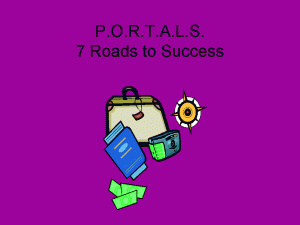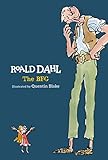There are at least 3 other “teaching/learning” frameworks that are relevant to Executive Functioning: Individualizing Learning, Learner “Characteristics” and Habits, and Executive Function/Metacognition. The first two–which address individual differences–will be the focus of this post.
INDIVIDUALIZING LEARNING as a framework comes in several different forms: Personalized Learning, Differentiated Instruction, Universal Design and Learning Styles. Each of these suggests that we need to understand individual learners and how learners differ.
- Personalized Learning
”Personalized learning is happening now and will expand significantly worldwide in 2016. Yet there are still different definitions for personalized learning and even some have concerns about what it means for kids. We know the main focus of personalized learning is our kids. So we are focusing on three main concepts for these trends we see for 2016 starting with learners, the teachers, and pulling together everything with culture and community that encompass the 10 Trends
http://www.personalizelearning.com/2015/12/10-trends-to-personalized-learning-in.html
Posted below are excerpts that seem to be most closely related to “Learning How to Learn.”
Focus on Learners includes the following topics: Discover the Learner, Learner Agency, Competency-Based and Kids Hacking School. Within this element of the framework, the following are most relevant to work on Executive Function.
Learner Agency: ” . It is about having a sense of ‘agency’ when we feel in control of things that happen around us; when we feel that we can influence events. This happens when teachers focus on learning as the goal by allowing flexibility in the pace at which learners are expected to learn. You will definitely be hearing more about “agency” in 2016.”
Hacking School: “Kids tend to be smarter than we give them credit. Since the system was created to encourage compliancy, many kids learn right from kindergarten to follow orders and do what the teacher tells them to do. However, because of the access to information on social media and conversations with their peers, they are learning to question, be curious, and even skeptical about “school”. They also are realizing with all that is available at their fingertips, they can teach themselves what they want to learn.”
Focus on Teachers Includes: Educator Competencies, Voice and Choice, and Blended Learning.
Voice and Choice: ” Providing choice can be confusing. If learners are choosing from a set of pre-planned choices from a computer program or a list of options from the teacher, then the teacher is ultimately the one responsible for the learning not the learner. As learners increase responsibility around voice, teachers can also provide a process that builds ownership as learners move toward agency with choice. 2016 will be the year we see more examples and strategies of learner voice and choice along the continuum around the world.”
Focus on Culture and Community includes: Common Language, Building Citizenship and Community as School.
Common Language: “….Personalized Learning is a culture shift. It is about transforming teaching school or district to Personalized Learning Environments, all stakeholders need to have a common language and understanding around personalized learning in conversations inside and outside of school…’
See also a related Model- The Institute for Personalized Learning: http://www.cesa1.k12.wi.us/institute/index.cfm
- Differentiating Learning
Another framework that addresses the topic of individualizing learning is “Differentiated Learning.” This framework is so widely known that it will not be discussed at length here, but see: http://www.edutopia.org/article/differentiated-instruction-resources
I still find Tomlinson’s The Differentiated Classroom (1999) the best source for a basic understanding of this framework, especially the Appendix. The “Equalizer” offers concrete dimensions of learning to consider.
- Universal Design for Learning
Universal Design for Learning is still another framework for understanding individual differences in learners. See: http://www.udlcenter.org/aboutudl/whatisudl This is UDL Center’s very detailed description of this framework with multiple print version options. The focus is on 3 principles of UDL: Recognition of the multiple means of representation, multiple means for students to express their learning, and multiple ways to stimulate interest and motivation.
Universal Design and Expert Learners http://www.udlcenter.org/aboutudl/expertlearners
- Learning Style(s)
Learning Style. If you “google” learning styles,” you will get links that range from Multiple Intelligences to a Wikipedia inventory, including criticisms: See, for example: https://en.wikipedia.org/wiki/Learning_styles
http://www.ascd.org/ASCD/pdf/journals/ed_lead/el_199010_curry.pdf This concept requires considerable caution as many of the “learning style” models have not been researched or have not been found to be consistent with what we know about learning and learners.
LEARNER “CHARACTERISTICS” OR “HABITS”
These frameworks focus on particular learner “characteristics” or “habits” that are assumed to be central to a student’s ability, achievement, awareness, and/or approach to learning. You will see some/much overlap in these models. Some of the more current frameworks include.
- Growth Mindset:
Recognizing and Overcoming False Growth Mindset | Edutopia
www.edutopia.org/blog/…overcoming-false-growth-mindset-carol-dweck
Examples of a false growth mindset include praising effort over progress, affirming students’ potential without enabling them, and blaming their mindset instead of …
Carol Dweck: The power of believing that you can improve …
www.ted.com/talks/carol_dweck_the_power_of_believing_that_you_can…
B Grit:
Grit: Angela Lee Duckworth: The key to success? Grit | TED Talk …
www.ted.com/talks/angela_lee_duckworth_the_key_to_success_grit?…
Video embedded · At the University of Pennsylvania, Angela Lee Duckworth studies intangible concepts such as self-control and grit to determine how they might predict
True Grit: The Best Measure of Success and How to Teach It …
www.edutopia.org/blog/true-grit-measure-teach-success-vicki-davis
Edutopia blogger Vicki Davis identifies the nature of grit, its necessity and value of grit in education, and ten ways of teaching students to develop their own grit.
Teaching Grit: How to Help Students Overcome Inner …
www.edutopia.org/blog/grit-help-students-overcome-inner-obstacles…
Video embedded · Teaching Grit Cultivates Resilience and Perseverance (Research Made Relevant Series) Amy: Kenny is a student that participated in my grit program
- Habits of Mind identified by Costa and Kallick …
This model warrants consideration because it is well developed and widely used in school districts..
Of the 16 “Habits” the following seem particularly relevant to Executive Functioning and Independent Learning: Persistence, Managing Impulsivity, Thinking Flexibly, Thinking About Thinking, Thinking Interdependently, Remaining Open to Continuous Learning, Questioning and Posing Problems, Applying Past Knowledge to New Situations, Creating, Imagining and Innovating, and Taking Responsible Risks.
www.ccsnh.edu/sites/default/files/content/documents/CCSNH MLC
- The Self-…Models There are several models with the title “self—something”.
Agency: http://www.personalizelearning.com/2015/10/learner-voice-demonstrates-commitment.html
Self-Regulated Learning: These models are particularly relevant to social learning issues.
Barry Zimmerman Discusses Self-Regulated Learning …
archive.sciencewatch.com/dr/erf/2011/11decerf/11decerfZimm
Barry Zimmerman Discusses Self-Regulated Learning Processes; Emerging Research Front commentary from the field of Social Sciences, general.
Self-Regulated Learning: http://www.rhartshorne.com/fall-2012/eme6507-rh/cdisturco/eme6507-eportfolio/documents/zimmerman.pdf
Self-Directed Learning:
http://classroom-aid.com/2013/03/23/self-directed-learning-well-explained/
and http://www.ciera.org/library/archive/2001-04/0104prwn.pdf
.
Self-Efficacy: http://www.uky.edu/~eushe2/Bandura/BanEncy.html This model by Bandura is a behavioral/social model that offers an important perspective on
http://www.theoryfundamentals.com/bandura.htm on Observational learning
Looking across these frameworks it is possible to see that we expect students to become increasingly independent as learners. How well they can/will become independent learners depends on what learners know about learning in general and their own learning in particular. And that will depend at least in part on their teacher(s) and the learning environment.
Next the focus will shift to resources specific to “Executive Function” as it applies in general, in the classroom, and for students who struggle with learning.









